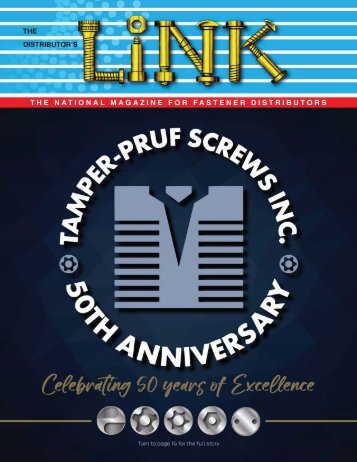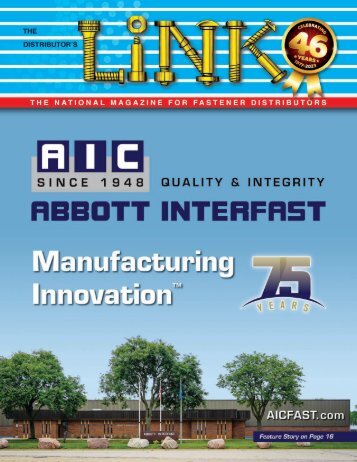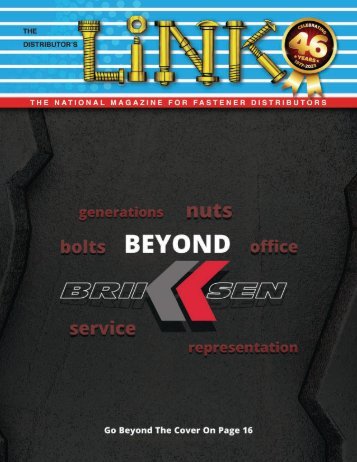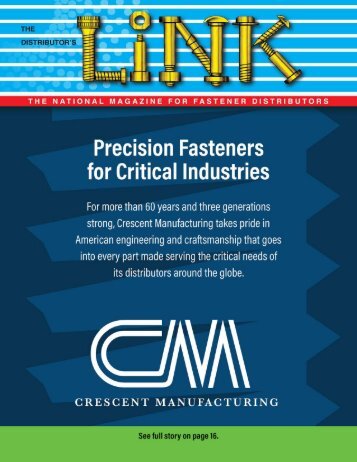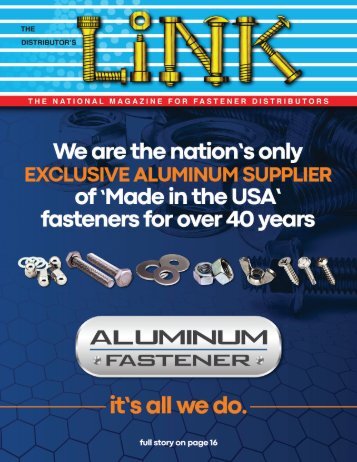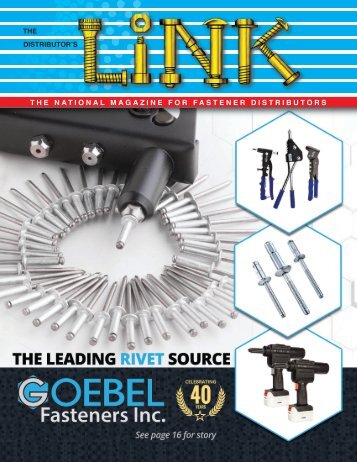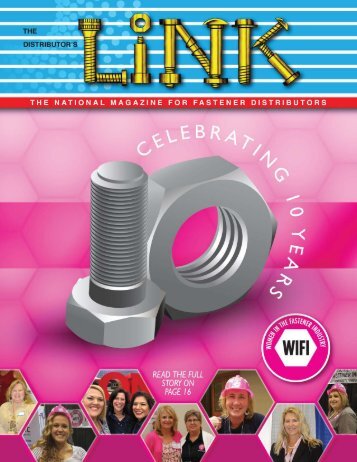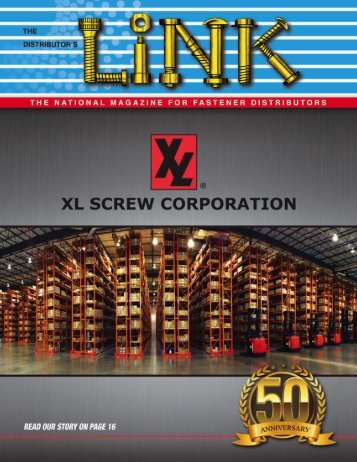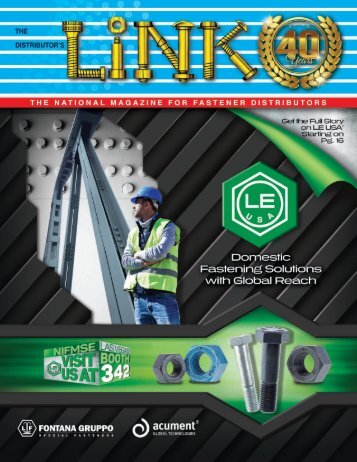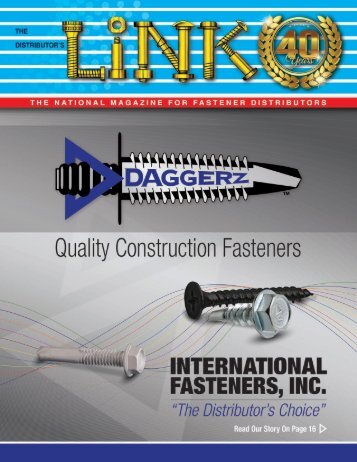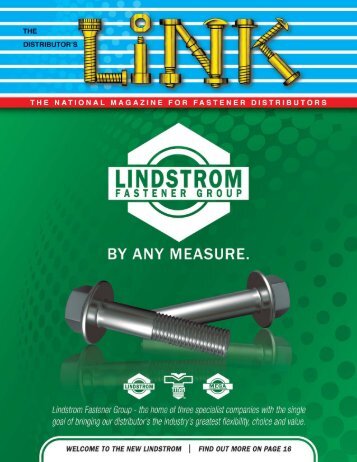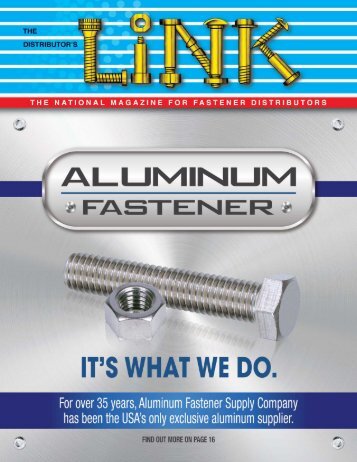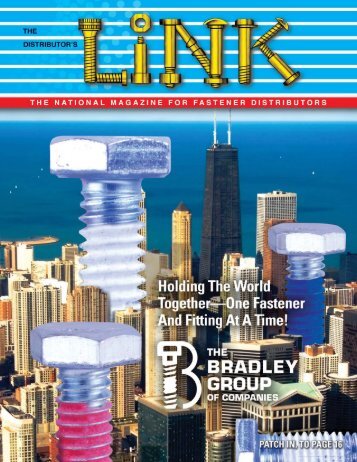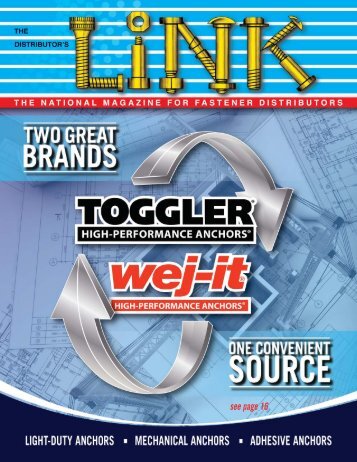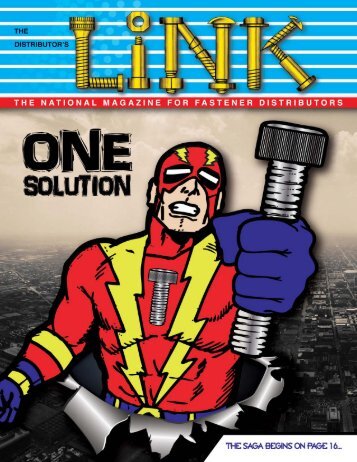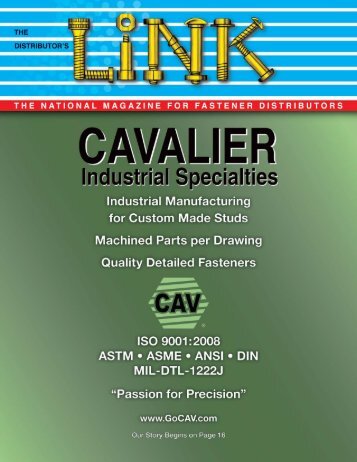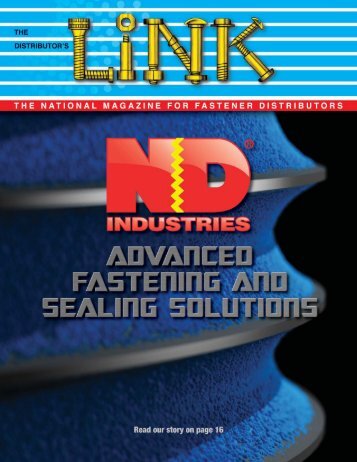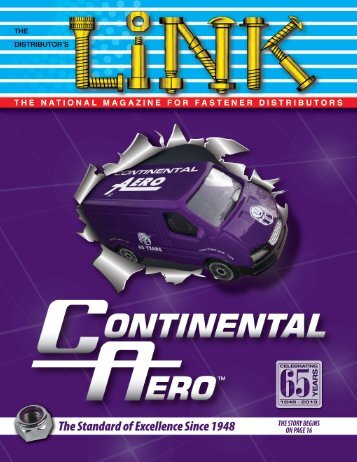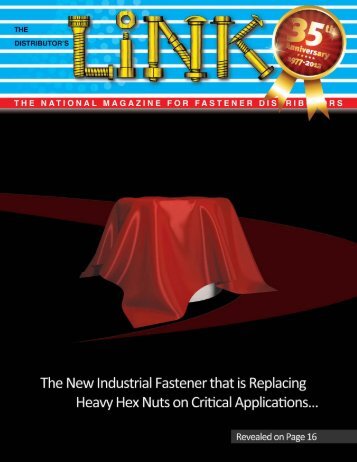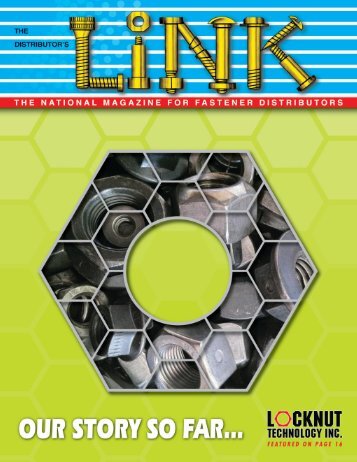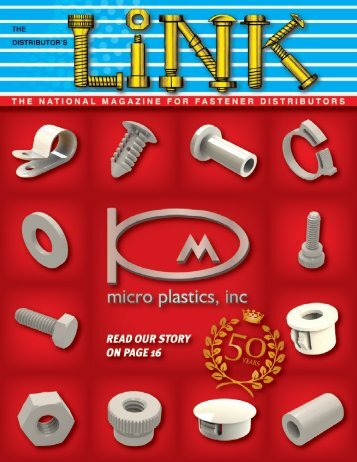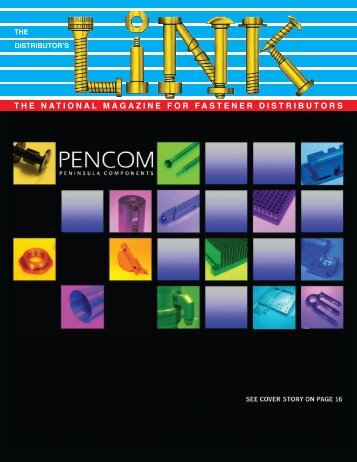FALL 2020
- Text
- Software
- Association
- Pins
- Industrial
- Screws
- Stainless
- Products
- Distributors
- Fasteners
- Fastener
118 THE DISTRIBUTOR’S
118 THE DISTRIBUTOR’S LINK LARRY BOROWSKI INSPECTING SCREW AND BOLT STRAIGHTNESS from page 38 The camber gage illustrated in the ASME standards and shown in this article is an attribute gage. It will only indicate to the user whether or not the part being inspected is within the specified limits for straightness, but will not indicate the exact magnitude of the camber or bow in the part. Indicating Gage For Measuring The Amount Of Screw Or Bolt Camber To determine the extent of the bow in a part used for either gathering statistical process control (SPC) data or for final inspection documentation, an indicating, variable type of gage such as the CamberChek® is needed. The CamberChek® gage is similar to the rail-type gage illustrated in the ASME standards except the nonstationary side rail slides on two precision bearings instead of a fixed position. The gage is designed so that gravity provides a constant closing pressure against the sliding rail. A digital indicator contacts the outside of the sliding rail for indicating the exact amount of bow in the parts being inspected by the gage. To determine the exact amount of camber or bow, the part is placed between the rails so that the sliding rail is at its closet position to the stationary rail. To find this spot, the bolt would be rotated 360º to determine the lowest indicator reading. The indicator is then “zeroed out”. The part is then rotated until the maximum indicator reading is achieved. The reading on the indicator is the exact amount of camber or bow in the measured part. Unlike the fixed jaw style of gage, you do not add the screw diameter to the allowable bow. Using this style of gage and our 1/2-13 x 4” fastener, you cannot exceed the .024” max allowable bow in screw or bolt to determine if it is within the acceptable straightness limits of the standard. Inspect Straightness To Avoid Complaints Bent screws and bolts can cause their users major assembly problems. When supplying screws and bolts that have lengths greater than eight times their body diameter, suppliers should inspect them for straightness to avoid potential customer complaints and/or rejects. LARRY BOROWSKI | GREENSLADE & COMPANY INC
- Page 6 and 7:
in the Fall 2020 issue of 6 DISTRIB
- Page 8:
6 THE DISTRIBUTOR’S LINK The Brad
- Page 12:
10 THE DISTRIBUTOR’S LINK Guy Ave
- Page 16:
14 THE DISTRIBUTOR’S LINK FCH SOU
- Page 19 and 20:
Purchasing INxSQL was the best deci
- Page 22:
INNOVATIVE TOOLS. EXCEPTIONAL RESUL
- Page 26:
24 THE DISTRIBUTOR’S LINK EUROLIN
- Page 30:
28 THE DISTRIBUTOR’S LINK SPECIAL
- Page 34 and 35:
32 THE DISTRIBUTOR’S LINK SPIROL
- Page 36:
34 THE DISTRIBUTOR’S LINK COMPUTE
- Page 39 and 40:
THE DISTRIBUTOR’S LINK 37 KEY BEL
- Page 41 and 42:
THE DISTRIBUTOR’S LINK 39
- Page 46 and 47:
44 THE DISTRIBUTOR’S LINK Anthony
- Page 48:
46 THE DISTRIBUTOR’S LINK Joe Dys
- Page 52 and 53:
50 THE DISTRIBUTOR’S LINK Advance
- Page 54:
52 THE DISTRIBUTOR’S LINK Jim Tru
- Page 57 and 58:
The NEFCO Corporation, a leading pr
- Page 60 and 61:
58 THE DISTRIBUTOR’S LINK INTERNA
- Page 62:
60 THE DISTRIBUTOR’S LINK NATIONA
- Page 65 and 66:
THE DISTRIBUTOR’S LINK 63
- Page 68 and 69:
66 THE DISTRIBUTOR’S LINK GLOBALF
- Page 70 and 71: 68 THE DISTRIBUTOR’S LINK J.W. Wi
- Page 72 and 73: 70 THE DISTRIBUTOR’S LINK INTERNA
- Page 74: 72 THE DISTRIBUTOR’S LINK NAW INS
- Page 78 and 79: 76 THE DISTRIBUTOR’S LINK R&R ENG
- Page 80 and 81: CONTINUED ON PAGE 86
- Page 82 and 83: NCFA SCREW OPEN 2020 VALLEAIRE GOLF
- Page 84: 82 THE DISTRIBUTOR’S LINK G&G Saf
- Page 87 and 88: THE DISTRIBUTOR’S LINK 85 UNICORP
- Page 89 and 90: Brico Industries Inc. is marking it
- Page 92: 90 THE DISTRIBUTOR’S LINK OBITUAR
- Page 96: 94 THE DISTRIBUTOR’S LINK Incline
- Page 100: 98 THE DISTRIBUTOR’S LINK METROPO
- Page 104: 102 THE DISTRIBUTOR’S LINK GUY AV
- Page 109 and 110: THE DISTRIBUTOR’S LINK 107
- Page 112: 110 THE DISTRIBUTOR’S LINK JASPER
- Page 116 and 117: 114 THE DISTRIBUTOR’S LINK SPIROL
- Page 118 and 119: 116 THE DISTRIBUTOR’S LINK COMPUT
- Page 122: 120 THE DISTRIBUTOR’S LINK EARNES
- Page 125 and 126: THE DISTRIBUTOR’S LINK 123
- Page 127: THE DISTRIBUTOR’S LINK 125
- Page 131 and 132: Jergens, Inc. announced that it has
- Page 134: WORK-FROM-HOME MADE EASY With INxSQ
- Page 137 and 138: fastenerlinks BRINGING YOU THE FAST
- Page 139 and 140: fastenerlinks BRINGING YOU THE FAST
- Page 142: 140 THE DISTRIBUTOR’S LINK NELSON
- Page 145 and 146: THE DISTRIBUTOR’S LINK 143
- Page 148: 146 THE DISTRIBUTOR’S LINK PRODUC
- Page 151 and 152: THE DISTRIBUTOR’S LINK 149 LAUREN
- Page 153 and 154: THE DISTRIBUTOR’S LINK 151 BRUNO
- Page 156: 154 THE DISTRIBUTOR’S LINK JASPER
- Page 160: 158 THE DISTRIBUTOR’S LINK JOE DY
- Page 163 and 164: THE DISTRIBUTOR’S LINK 161 ROBERT
- Page 165 and 166: THE DISTRIBUTOR’S LINK 163 PWFA C
- Page 168 and 169: advertisers index # 3Q, INC. 37 Was
- Page 170:
advertisers index M MAR-BRO MANUFAC
Inappropriate
Loading...
Mail this publication
Loading...
Embed
Loading...
|
SHARE A PAGE FROM THIS MAGAZINE OPTION 1: Click on the share tab above, or OPTION 2: Click on the icon (far right of toolbar) and then click on the icon (far right of toolbar) and then click on the  icon (top right of the page). icon (top right of the page).
|
View Archives
Copyright © Distributor's Link, Inc. All Rights Reserved | Privacy Policy







